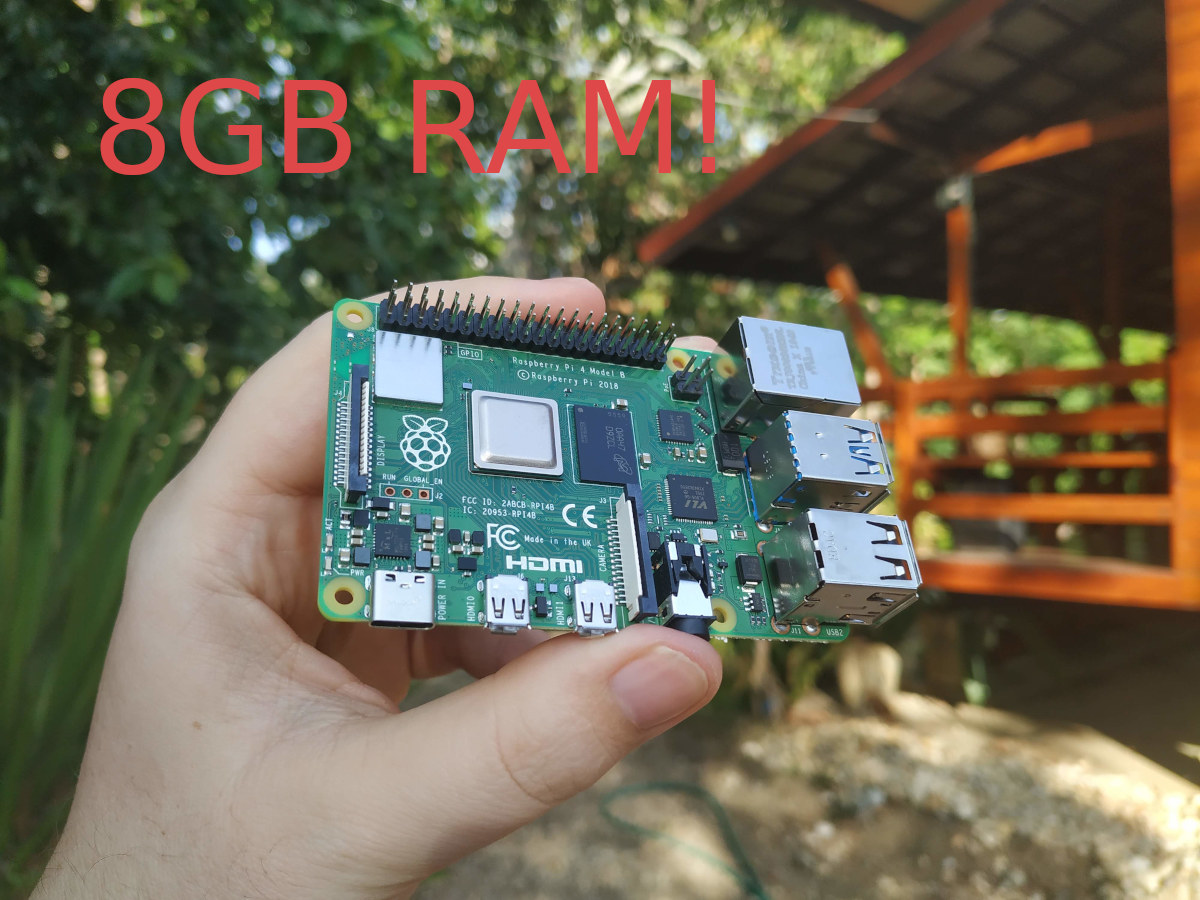The Raspberry Pi 4 Model B was launched in June 2019 with Broadcom BCM2711 Arm Cortex-A72 processor coupled with either 1, 2, or 4GB LPDDR4 RAM.
But there were expectations that a Raspberry Pi 4 with 8GB RAM or an 8GB eMMC flash may be eventually launched, as some of the user guides read “Product name: Raspberry Pi 4 Model B 1 GB, 2 GB, 4 GB + 8 GB variants”. We now know the answer as the Raspberry Pi Foundation has just introduced Raspberry Pi 4 with 8GB RAM.
Raspberry Pi 4 8GB specifications are the same except for the RAM capacity:
-
- SoC – Broadcom BCM2711 quad-core Cortex-A72 (ARMv8) @ 1.5GHz with VideoCore VI GPU supporting OpenGL ES 3.0 graphics
- System Memory – 8GB LPDDR4
- Storage – MicroSD card slot
- Video Output & Display I/F
- 2x micro HDMI ports up to 4Kp60
- 3.5mm AV port with composite video (and stereo audio)
- 2-lane MIPI DSI display port
- 2x micro HDMI ports up to 4Kp60
- Video
- Decode – H.265 up to 4Kp60, H.264 up to 1080p60
- Encode – H.264 up to 1080p30
- Camera – 2-lane MIPI CSI camera port
- Audio – Stereo audio via AV port, digital audio via HDMI ports
- Connectivity
- Gigabit Ethernet (RJ45)
- Dual-band (2.4 GHz/5.0 GHz) 802.11b/g/n/ac WiFi 5
- Bluetooth 5.0 BLE
- USB – 2x USB 3.0 ports, 2x USB 2.0 ports.
- Expansion – Standard 40-pin GPIO header fully backward-compatible with previous Raspberry Pi boards
- Power Supply
- 5V DC via USB-C connector (minimum 3A )
- 5V DC via GPIO header (minimum 3A )
- Power over Ethernet (PoE) via optional PoE HAT
- Dimensions – 85 x 56 mm (same as other model B boards)
- Temperature Range – 0 – 50°C
Raspberry Pi 4 8GB RAM Unboxing
I got one of the new boards just before launch courtesy of Malaysia based Cytron.
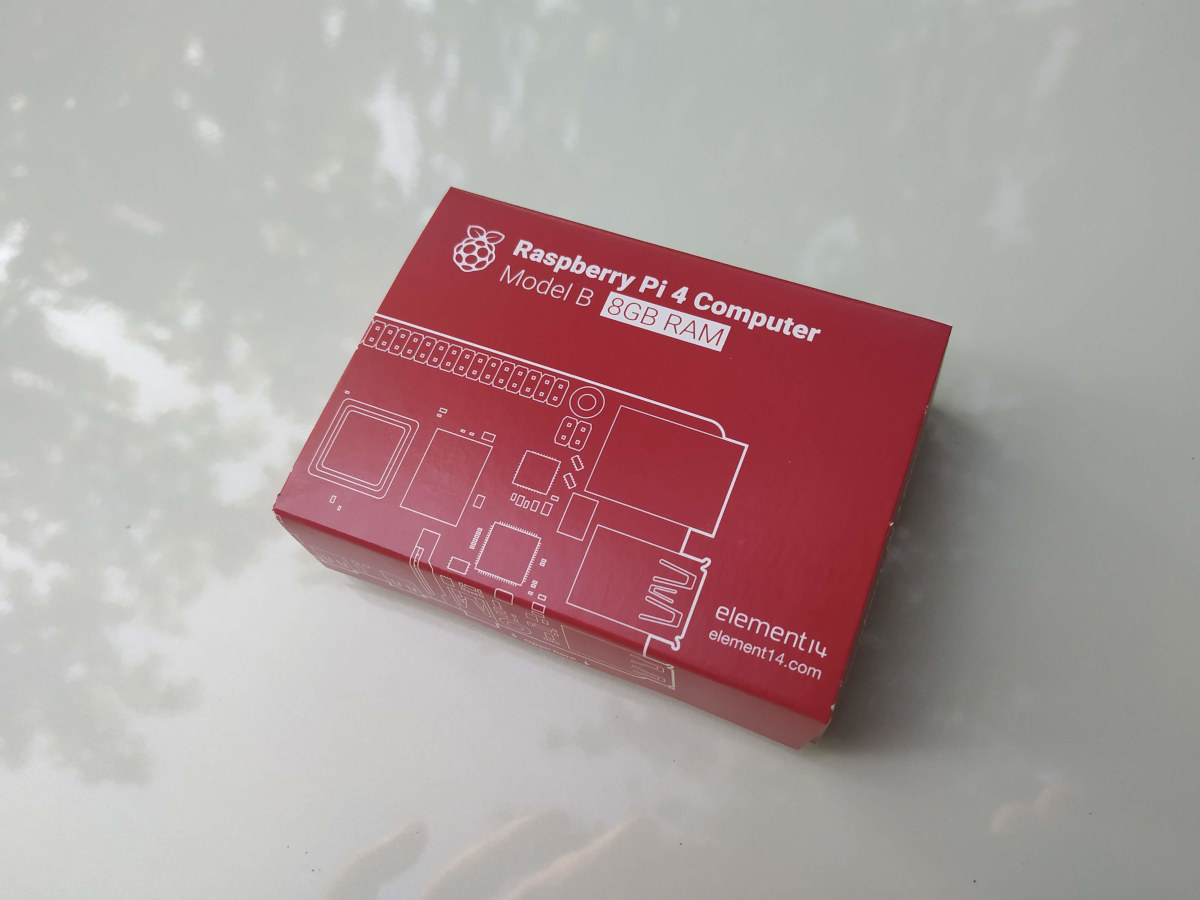
The marking on the package is a good sign, and the SBC ships with a GPIO header pinout card, a warning card, and a safety and user guide…
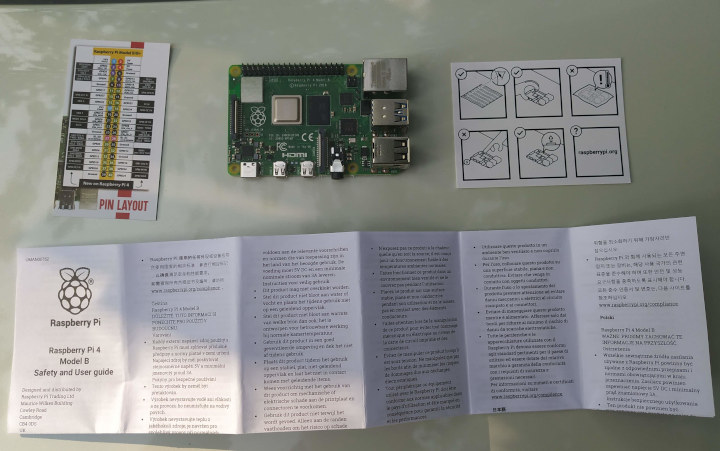
But if we look at the board itself, nothing has really changed.
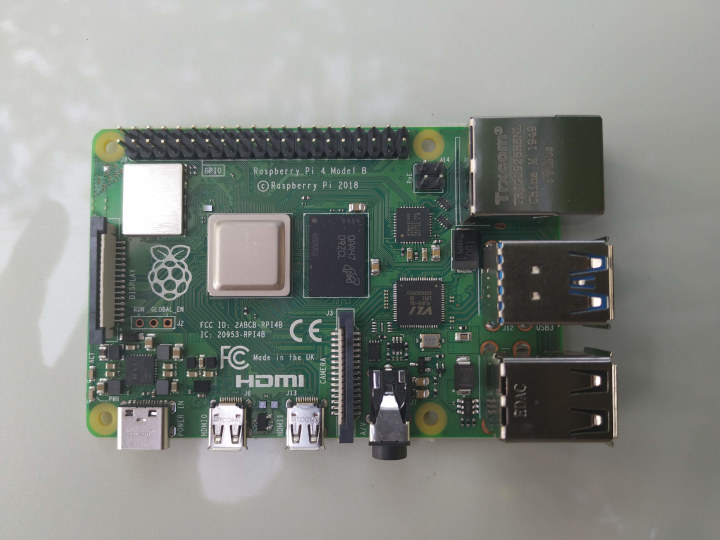
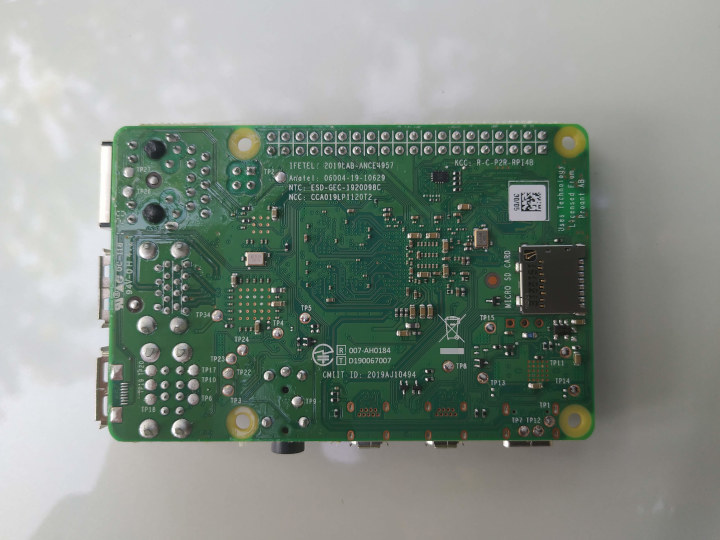
The important part is the LPDDR4 chip marked “OAA47 D9ZCL”. It’s meaningless, so we’ll need to use Micron component marking decoder to find out D9ZCL FBGA code is for MT53E2G32D4NQ-046 WT:A chip that is indeed a 64Gbit (8GB) LPDDR4 memory chip.
Raspberry Pi 4 8GB vs 1GB RAM
But that’s the only difference I can easily sport, so let’s compare an early Raspberry Pi 4 1GB RAM to the latest Raspberry Pi 4 8GB RAM board.
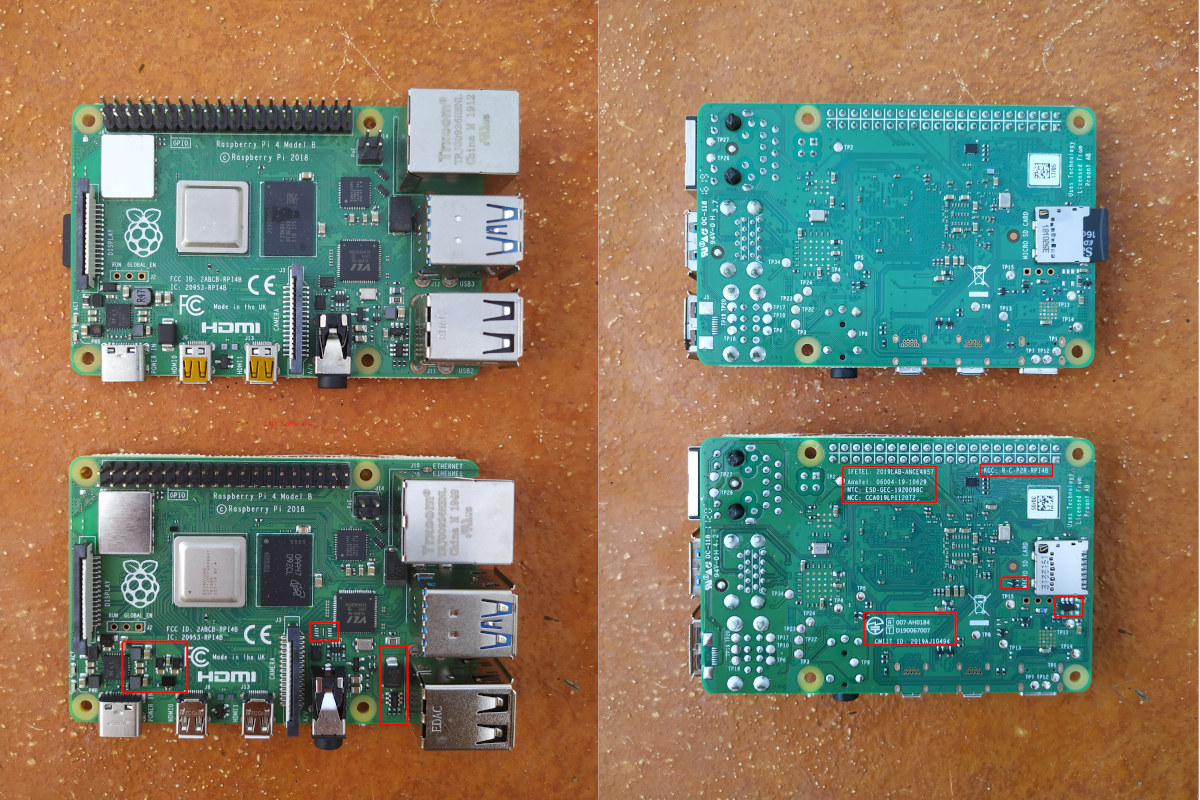
The back of the board adds silkscreen for certifications, as well as existing modifications for Raspberry Pi 4 Rev 1.2 to avoid damaging the board when inserting a MicroSD card. But the top of the board has more modification around the USB-C port, USB Type-A ports, and a chip between the VLI PCIe to USB chip and AV jack is just gone. So it’s possible further USB-C issues have been fixed, and some improvements have been made to USB host ports maybe with regards to powering up external hard drives.
[Update from Eben Upton about hardware changes:
These are the regulator changes I mention in the post. The disappeared chip near the USB connector is the old regulator. The new stuff near the USB-C is the new regulator. The input clamp component has moved across to the USB area to make room.
]
What about software? Raspbian 64-bit on the way?
Getting a Raspberry Pi 4 with 8GB RAM is great, but shouldn’t we have a 64-bit OS to make use of the extra memory? We’ve already seen Debian 10 64-bit, BalenaOS, and Ubuntu for Raspberry Pi, but considering Raspbian is the officially recommended operating system we should expect a 64-bit version of Raspbian very soon. And indeed the Raspberry Pi Foundation has posted a beta version of Raspberry Pi 64-bit OS (not called Raspbian 64-bit for some reason) which I was told it is still not ready for prime time, and I’m not surprised because it’s… a beta version. I’m not able to test the board right since I’m on the road and don’t have a proper USB-C power adapter or micro HDMI cable with me. However, I’ve been told the 32-bit version of Raspbian already shows about 8GB RAM.
How is that possible? If I remember correctly some Arm processors support LPAE 40-bit addressing which allows 32-bit systems to access over 4GB but with a limitation that a single process cannot use more than 3GB RAM. There’s already a 64-bit option in /boot/config.txt which you set if you also use a 64-bit kernel.
|
1 |
arm_64bit=1 |
This should allow you to run 64-bit applications without LPAE limitation, but it’s still challenging since the Raspbian rootfs is still 32-bit only, so you’d have to build your own 64-bit libraries too. I’ll probably test Raspberry Pi OS 64-bit and/or other 64-bit OS compatible with Raspberry Pi such as Ubuntu 20.04 on the board once I’m back home.
One thing you can be for sure is that benchmark results for the 8GB RAM version are likely to be exactly the same as for 2GB and 4GB models. Raspbian 64-bit OS may eventually bring some improvements and/or regressions in benchmarks, but people who will really benefit from the extra RAM are those who ran out of memory with 4GB RAM, or experienced severe swapping on the MicroSD card.
How Much? And Where can I get One?
Raspberry Pi 4 8GB is available with an official retail price of $75 US before taxes and shipping. It can be purchased from distributors including Cytron, Element14, Seeed Studio, and Pimonori.
Continue reading “Checking Out Raspberry Pi OS 64-Bit on Raspberry Pi 4 8GB RAM“.

Jean-Luc started CNX Software in 2010 as a part-time endeavor, before quitting his job as a software engineering manager, and starting to write daily news, and reviews full time later in 2011.
Support CNX Software! Donate via cryptocurrencies, become a Patron on Patreon, or purchase goods on Amazon or Aliexpress


